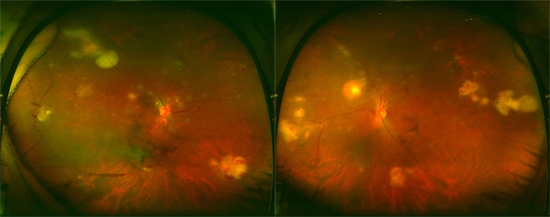1. Gupta A, Gupta V, Gupta A, Dogra MR, Pandav SS, Ray P, Chakraborty A. Spectrum and clinical profile of post cataract surgery endophthalmitis in north India. Indian J Ophthalmol. 2003; 51:139–145.
2. Kunimoto DY, Das T, Sharma S, Jalali S, Majji AB, Gopinathan U, Athmanathan S, Rao TN. Endophthalmitis Research Group. Microbiologic spectrum and susceptibility of isolates: part II. Posttraumatic endophthalmitis. Am J Ophthalmol. 1999; 128:242–244.
3. Kunimoto DY, Das T, Sharma S, Jalali S, Majji AB, Gopinathan U, Athmanathan S, Rao TN. Endophthalmitis Research Group. Microbiologic spectrum and susceptibility of isolates: part I. Postoperative endophthalmitis. Am J Ophthalmol. 1999; 128:240–242.
4. Narang S, Gupta A, Gupta V, Dogra MR, Ram J, Pandav SS, Chakrabarti A. Fungal endophthalmitis following cataract surgery: clinical presentation, microbiological spectrum, and outcome. Am J Ophthalmol. 2001; 132:609–617.
5. Apt L, Isenberg SJ. Infectious endophthalmitis after cataract surgery. Br J Ophthalmol. 1994; 78:948–949.
6. Kresloff MS, Castellarin AA, Zarbin MA. Endophthalmitis. Surv Ophthalmol. 1998; 43:193–224.
7. Schiedler V, Scott IU, Flynn HW Jr, Davis JL, Benz MS, Miller D. Culture-proven endogenous endophthalmitis: clinical features and visual acuity outcomes. Am J Ophthalmol. 2004; 137:725–731.
8. Essman TF, Flynn HW Jr, Smiddy WE, Brod RD, Murray TG, Davis JL, Rubsamen PE. Treatment outcomes in a 10-year study of endogenous fungal endophthalmitis. Ophthalmic Surg Lasers. 1997; 28:185–194.
9. Lingappan A, Wykoff CC, Albini TA, Miller D, Pathengay A, Davis JL, Flynn HW Jr. Endogenous fungal endophthalmitis: causative organisms, management strategies, and visual acuity outcomes. Am J Ophthalmol. 2012; 153:162–166.
10. Chakrabarti A, Shivaprakash MR, Singh R, Tarai B, George VK, Fomda BA, Gupta A. Fungal endophthalmitis: fourteen years' experience from a center in India. Retina. 2008; 28:1400–1407.
11. Wykoff CC, Flynn HW Jr, Miller D, Scott IU, Alfonso EC. microbiology and clinical outcomes. Ophthalmology. 2008; 115:1501–1507. 1507.e1–1507.e2.
12. Pflugfelder SC, Flynn HW Jr, Zwickey TA, Forster RK, Tsiligianni A, Culbertson WW, Mandelbaum S. Exogenous fungal endophthalmitis. Ophthalmology. 1988; 95:19–30.
13. Lange C, Feltgen N, Junker B, Schulze-Bonsel K, Bach M. Resolving the clinical acuity categories "hand motion" and "counting fingers" using the Freiburg Visual Acuity Test (FrACT). Graefes Arch Clin Exp Ophthalmol. 2009; 247:137–142.
14. Lemley CA, Han DP. Endophthalmitis: a review of current evaluation and management. Retina. 2007; 27:662–680.
15. Stern WH, Tamura E, Jacobs RA, Pons VG, Stone RD, O'Day DM, Irvine AR. Epidemic postsurgical Candida parapsilosis endophthalmitis. Clinical findings and management of 15 consecutive cases. Ophthalmology. 1985; 92:1701–1709.
16. Srdic N, Radulovic S, Nonkovic Z, Velimirovic S, Cvetkovic L, Vico I. Two cases of exogenous endophthalmitis due to Fusarium moniliforme and Pseudomonas species as associated aetiological agents. Mycoses. 1993; 36:441–444.
17. Kalkanci A, Ozdek S. Ocular fungal infections. Curr Eye Res. 2011; 36:179–189.
18. Menezes AV, Sigesmund DA, Demajo WA, Devenyi RG. Mortality of hospitalized patients with Candida endophthalmitis. Arch Intern Med. 1994; 154:2093–2097.








 PDF
PDF ePub
ePub Citation
Citation Print
Print




 XML Download
XML Download